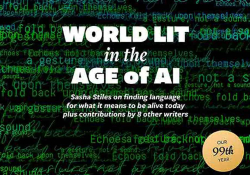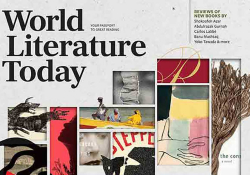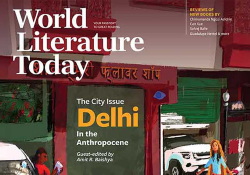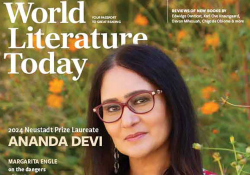Editor’s Note
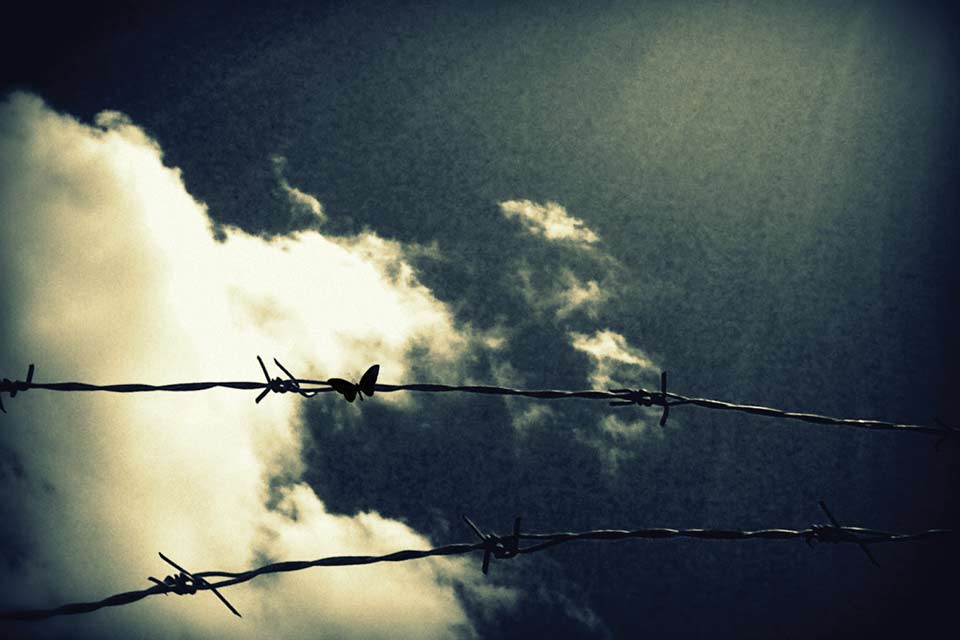
I will tell you stories — So that you may bear witness with me to this absurdity we call war.
— Khaled Shaheen, “From the War Diaries of Gaza”
No statistics, historical parallels, or outside observation can tell the story of Gaza. At least not the whole story. In the thirty-eight pages constituting the “Gaza Voices” section in this issue, however, twenty-eight poets, writers, and photographers—all eyewitnesses to the horrors of war—will tell you the human story of Gaza in 2025. Long after a permanent ceasefire is declared, these voices, these images, will continue to resonate.
A case in point: the photo by Abed Rahman on page 43, accompanying the essay by Nour Abo-Rokb, haunts me. As if speaking directly to the girl staring at the viewer from the photo, Abo-Rokb writes: “I assure you, my unnamed girl: I’ll hold your life for you until you can come back to claim it.” And on page 51, Emad Nassar frames a stunning photo: a father watches his two laughing children bathe in the family bathtub in what’s left of their bombed apartment, its walls ripped apart, open to the sky beyond. Here again, in the adjacent text, the will to survive prevails: “Despite everything,” writes Omar Hammash, “our hearts pounded, ablaze with the desire for life.” Surviving four displacements—from Jabalia to Rafah, Khan Younis, and Al-Zawaydah—Hammash found refuge in a small tent, in the cold and rain, where he wrote his essay after losing both his wife and his son, Samer. After completing the text, he then returned to his destroyed home. Working day and night with small tools, he finally found the body of his dead father, crushed beneath the rubble. But instead of writing with rage, Hammash ends his essay with a prayer for peace.
While spending more than six months guest-editing “Gaza Voices,” Yousef Khanfar communicated with these storytellers via texts, phone calls, and emails, often only able to speak with them for minutes at a time due to the constant bombing and displacement, causing him great emotional, mental, and physical duress. In some cases, weeks passed with nothing but radio-silence. Thankfully, he was able to finalize much of this work during the temporary ceasefire that began in mid-January, but since Israel imposed a total blockade on March 18, conditions have only deteriorated. Writing from the rubble of apartments, in tent camps, and in hospital clinics, several of the writers and photographers told him that, in case they don’t survive, they want their contribution to bear witness as their last testament to the world. “We write to survive this unbearable reality,” declares Khaled Shaheen (page 66).
By focusing on the storytellers’ humanity, writes Khanfar, the purpose of “Gaza Voices” is “to enlighten and not to convince.” By way of enlightenment, he curated “My Gaza Bookshelf,” a list of thirty-three titles that concludes the section. The very first book in the list, Refaat Alareer’s posthumous collection If I Must Die, is a tribute to Dr. Alareer, who was killed by an IDF airstrike on December 6, 2023, along with his brother, nephew, his sister, and three of her children. Leading off this issue’s review section, Omar Sabbagh contends that, in If I Must Die, “Narrative is implicitly held up as a bearer of futurity as much as a bearer of memory and connection to the past.” In the book’s eponymous poem, narrated from a future-anterior perspective, Alareer imagines a child in Gaza seeing a kite but imagining it as an angel “bringing back love.” In the poem’s opening and closing stanzas, he writes: “If I must die, / you must live / to tell my story / . . . / let it bring hope, / let it be a story.”
Against forgetting, the stories by the poets, writers, and photographers featured here will live on to bear the memory of Gaza, and Gazans, through and beyond the end of the war. And they will bear the futurity of their people. May all these kites, filled with promises of peace, rise into the air and augur a future of hope.
Daniel Simon

